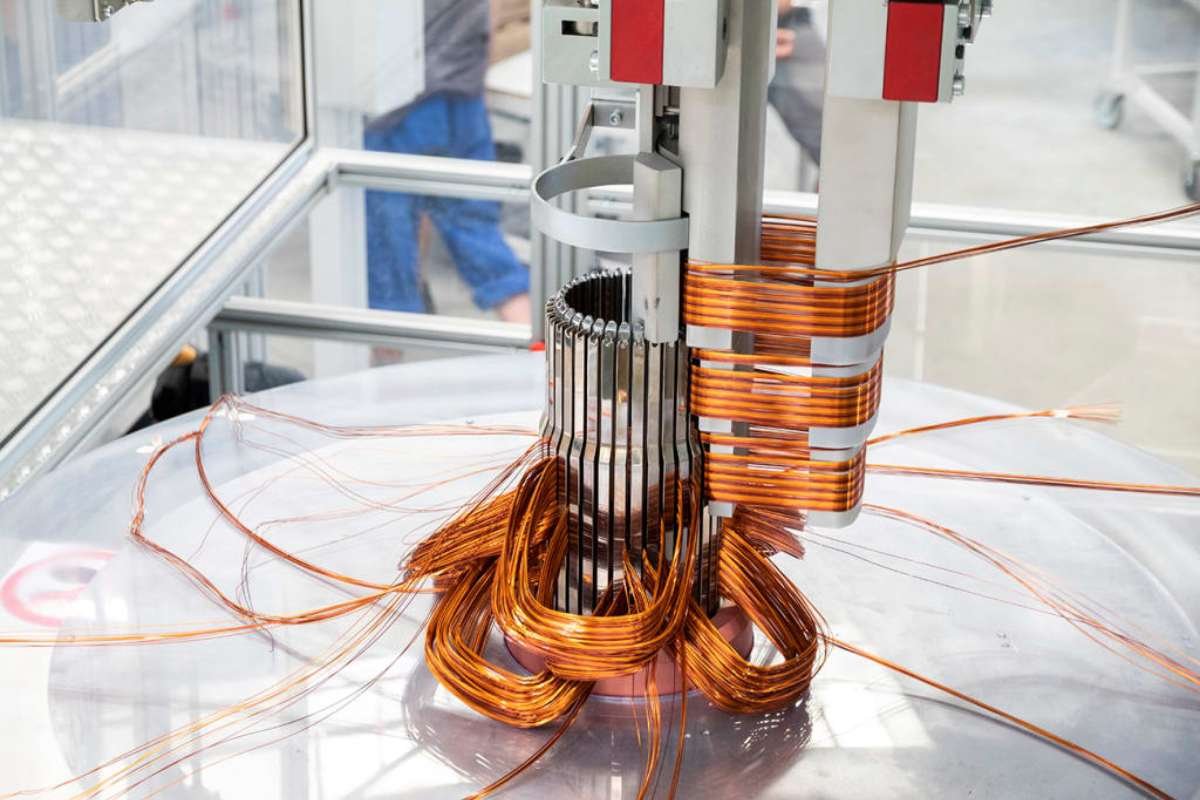In the ever-evolving world of business and production, contract manufacturing has emerged as a strategic and dynamic practice, reshaping the way companies approach the creation of their products. From electronics to pharmaceuticals and beyond, businesses worldwide are increasingly turning to contract manufacturing to streamline operations, enhance efficiency, and stay competitive in a rapidly changing marketplace.
Understanding Contract Manufacturing:
At its core, manufacturing is a business arrangement where a company outsources the production of certain components or entire products to a third-party manufacturer. This outsourcing model allows the hiring company, often referred to as the “brand owner” or “original equipment manufacturer (OEM),” to focus on its core competencies, such as research and development, marketing, and distribution, while leveraging the specialized expertise and facilities of the contract manufacturer.
The contract manufacturing process typically involves a detailed agreement outlining the terms and conditions of the partnership, including specifications, quality standards, pricing structures, and delivery schedules. This collaborative approach enables companies to scale production efficiently, respond to market demands more effectively, and reduce capital investment in manufacturing facilities and equipment.
Key Industries Embracing Contract Manufacturing:
It is a versatile solution adopted across various industries, each with its unique requirements and considerations.
Electronics and Technology: In the fast-paced world of electronics, contract manufacturing is instrumental in the production of components such as circuit boards, semiconductors, and consumer electronics. Tech companies benefit from the agility and cost-effectiveness offered by specialized manufacturers, allowing them to keep pace with rapid technological advancements.

Pharmaceuticals and Biotechnology: The pharmaceutical industry relies heavily on manufacturing for the production of medications, vaccines, and medical devices. Outsourcing to contract manufacturers enables pharmaceutical companies to navigate complex regulatory environments, accelerate time-to-market, and ensure compliance with stringent quality standards.
Automotive: Automotive manufacturers often collaborate with contract manufacturers for the production of components ranging from engines and transmissions to intricate electronic systems. This strategic outsourcing allows automotive companies to optimize their supply chains, reduce costs, and enhance their focus on innovation.
Food and Beverage: Contract manufacturing is prevalent in the food and beverage industry, where companies leverage the expertise of specialized manufacturers for the production of items like snacks, beverages, and ready-to-eat meals. This approach provides flexibility in adapting to changing consumer preferences and market trends.
Benefits of Contract Manufacturing:
The widespread adoption of contract manufacturing can be attributed to the numerous advantages it offers to businesses seeking to optimize their operations and remain competitive in a globalized economy.
Cost Efficiency: Manufacturing allows companies to benefit from the economies of scale achieved by specialized manufacturers. Shared resources, bulk purchasing, and operational expertise contribute to cost savings, making products more competitive in the marketplace.
Focus on Core Competencies: By outsourcing manufacturing processes, companies can concentrate on their core strengths, such as research, development, marketing, and distribution. This strategic focus enhances overall efficiency and innovation.

Flexibility and Scalability: Contract manufacturing provides businesses with the flexibility to scale production up or down based on market demand. This adaptability is particularly valuable in industries characterized by seasonality or unpredictable market trends.
Access to Specialized Expertise: Contract manufacturers often possess specialized knowledge, skills, and technology that may be challenging or costly for a brand owner to develop in-house. This expertise contributes to the production of high-quality goods and accelerates time-to-market.
Risk Mitigation: Sharing the manufacturing risk with a specialized partner helps companies navigate challenges such as market fluctuations, regulatory changes, or unforeseen disruptions. This collaborative approach enhances resilience in an increasingly uncertain business environment.
Challenges and Considerations:
While manufacturing offers substantial benefits, it is not without its challenges and considerations. Addressing these factors is crucial for ensuring successful partnerships and reaping the full advantages of this business model.
Quality Control: Maintaining consistent product quality across different manufacturing facilities is a critical consideration. Establishing robust quality control processes and clear communication channels is essential to meet or exceed customer expectations.
Intellectual Property Protection: Sharing proprietary designs and technologies with a contract manufacturer raises concerns about intellectual property protection. Comprehensive legal agreements and confidentiality measures are imperative to safeguard the brand owner’s intellectual assets.
Supply Chain Risks: Reliance on external manufacturers introduces potential vulnerabilities in the supply chain. Companies must assess and manage these risks through strategic partnerships, contingency planning, and ongoing communication with suppliers.
Communication and Collaboration: Effective communication between the brand owner and the contract manufacturer is paramount. Misunderstandings regarding specifications, timelines, or quality standards can lead to delays and complications. Regular communication and collaboration mitigate these risks.
Regulatory Compliance: Industries such as pharmaceuticals and electronics face stringent regulatory requirements. Ensuring that the contract manufacturer adheres to these regulations is essential for meeting industry standards and avoiding legal consequences.
The Global Landscape of Contract Manufacturing:
The growth of global trade and interconnected supply chains has transformed manufacturing into a global phenomenon. Companies are no longer limited by geographical boundaries when seeking manufacturing partners, allowing them to access specialized expertise and cost-effective production capabilities anywhere in the world.
China has historically been a prominent hub for contract manufacturing, particularly in electronics and consumer goods. Its vast manufacturing infrastructure, skilled workforce, and cost advantages have attracted companies from around the globe. However, other regions, including Southeast Asia, Eastern Europe, and Latin America, are gaining prominence as competitive alternatives.
The decision to choose a specific manufacturing location involves a careful assessment of factors such as labor costs, infrastructure, regulatory environment, and geopolitical stability. Additionally, the ongoing reshaping of trade dynamics and geopolitical considerations can influence the strategic decisions of companies engaged in contract manufacturing.
Future Trends and Innovations:

As technology continues to advance and industries evolve, the landscape of contract manufacturing is poised for further transformation. Several trends and innovations are shaping the future of this dynamic practice:
Smart Manufacturing and Industry 4.0: The integration of smart technologies, automation, and data analytics into manufacturing processes is ushering in a new era of efficiency and precision. Contract manufacturers are adopting Industry 4.0 principles to enhance production capabilities and provide real-time insights to brand owners.
Sustainability Initiatives: With a growing emphasis on environmental sustainability, contract manufacturers are increasingly incorporating eco-friendly practices into their operations. This includes the adoption of renewable energy sources, waste reduction measures, and eco-conscious supply chain management.
On-Demand Manufacturing: The rise of on-demand manufacturing allows companies to produce goods in response to real-time demand. This agile approach minimizes excess inventory, reduces lead times, and aligns production closely with market fluctuations.
Customization and Personalization: Consumer preferences for personalized products are driving the demand for customizable manufacturing processes. Contract manufacturers are adapting to this trend by offering greater flexibility in product design and features.
Reshoring and Nearshoring: In response to supply chain disruptions and a desire for greater control, some companies are exploring reshoring or nearshoring strategies. This involves bringing manufacturing operations closer to the brand owner’s location to enhance visibility and responsiveness.
Conclusion: Navigating the Future of Production
Manufacturing has become a cornerstone of modern production strategies, offering businesses a pathway to efficiency, innovation, and global competitiveness. As industries continue to evolve and consumer demands shape market dynamics, the role of manufacturing will likely expand and adapt to meet the challenges and opportunities of the future.
From electronics to pharmaceuticals, and beyond, companies will increasingly look to strategic partnerships with contract manufacturers to optimize their supply chains, mitigate risks, and deliver high-quality products to a global market. As the landscape of manufacturing undergoes further technological advancements and shifts in global trade dynamics, the ability to navigate and leverage the potential of contract manufacturing will remain a key factor in the success of businesses worldwide.


















